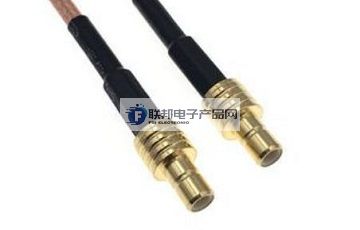Categorization:Product Information
26G microwave RF cable is a type of cable used for transmitting high-frequency electromagnetic signals that operate at frequencies up to the 26 GHz (gigahertz) level. Commonly used in wireless communications, radar systems, satellite communications and microwave devices, this RF cable is capable of transmitting signals in the high frequency range and maintaining consistent signal quality. The main electrical properties and parameters of RF line can be divided into the following aspects: operating frequency (Frequency): the operating frequency of the RF line refers to the frequency range of electromagnetic signals it can transmit. 26G microwave RF line operating frequency of 26 GHz. insertion loss (Insertion Loss): Insertion loss refers to the signal in the RF line transmission process due to attenuation, scattering and absorption of the energy loss. Insertion Loss: Insertion loss is the loss of energy due to attenuation, scattering and absorption during transmission of a signal in an RF line. Insertion loss is usually expressed in decibels (dB), and a lower insertion loss for an RF line means it can transmit signals more efficiently. Return Loss: The return loss is the energy loss of the signal reflected back to the source on the RF line. It reflects the matching performance of the signal transmission process, usually expressed in decibels. A high return loss means less signal reflection and a better match between the RF line and the source. Phase Stability: Phase stability is the degree of phase variation of the transmitted signal in the RF line. In high-frequency applications, phase stability is important to maintain signal accuracy and phase synchronization. In-Band Ripple (VSWR): In-band ripple is the change in amplitude of a signal over the frequency range supported by the RF line. It is caused by matching problems between the characteristic impedance of the RF line and the connectors and equipment. Lower in-band ripple indicates that the signal is transmitted more consistently through the RF line. Impedance: Impedance is the proportional relationship between current and voltage in an RF line. Common RF line impedances include 50 ohms and 75 ohms, while 26G microwave RF lines usually use a standard impedance of 50 ohms. Temperature Stability: Temperature stability refers to the degree of change in the electrical properties of the RF cable under different temperature conditions.

On the federal electronic products network platform related to the introduction and sales of products briefly: federal electronic products network - a professional agent / production / sales of a variety of [connectors | wiring harness | wire and cable products]; if you have a related [connectors | wiring harness | wire and cable products] purchasing / sourcing needs or would like to buy / to understand which connectors | wiring harness | wire and cable products we can provide solutions, please contact our business staff below; if you have a related [connectors | wiring harness | wire and cable products] sales / resources and promotion needs, please click on the ¡°business cooperation ¡± to discuss with a person! If you have related [connectors | harness | wire and cable products] sales / resources and promotion needs, please click on the ¡¡ Business Cooperation ← ¡" to discuss with a person!